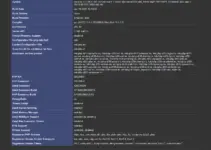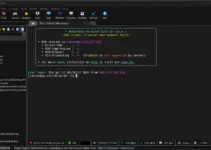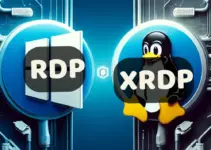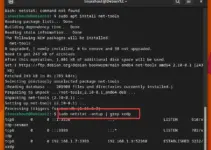In the modern world, where PC hardware is getting extremely powerful and advanced, we cannot bear the wastage of computing resources, therefore virtualization technology is the only solution to fully use their capabilities. So, to ensure the user will have the benefit of virtualization as per their needs, developers came up with different software solutions to provide better efficiency and flexibility over VMs and their running applications. Out of such solutions, the two names are OpenVZ and Docker, both are meant to deploy Virtual machines and assure the efficient utilization of system resources.
However, even though their end purpose is the same, their approach and underlying technologies are significantly part. In this article, we try to understand the purpose of using OpenVZ and Docker, and how they are different from each other.
The key difference between OpenVZ and Docker:
OpenVZ provides OS-level virtualization and can run multiple isolated Linux containers but as virtual private servers whereas Docker is application-centric and uses containerization features to run apps or services to provide isolation and portability. In short, Docker is an application container solution whereas OpenVZ is an OS container solution.
Understand both in detail:
What is OpenVZ?
OpenVZ was originally derived from the Virtuozzo project, hence known as Open Virtuozzo. The developers of it keep evolving the OpenVZ to offer a robust container solution. It is also open source and uses a modified Linux kernel to provide virtualization and isolation. OpenVZ is a full-fledged customized Linux distro that needs to be installed on any Physical server to create and run multiple containers or virtual servers in an isolated environment. This implies each container on OpenVZ will act as an independent server, hence they will also have their files, processes, and resource allocations.
Key Features and General Use Cases
The key feature of OpenVZ is it provides OS-level virtualization and, hence has direct interaction with underlying hardware to offer high performance and density for Linux containers. To achieve, this it creates a virtual stand-alone server for each container and shares the host node’s Linux kernel among the containers. Hence, the single Linux kernel will be shared across all virtual servers, which significantly reduces overhead.
OpenVZ can be used by anyone, however, it is well-suited for hosting services that need to cater to multiple users or services on a single physical server to offer scalable solutions.
Technical Details
The Containers running on OpenVZ are light in weight and can run on the host system without putting much performance impact. The reason behind this is the virtual servers or containers running using OpenVZ share the same kernel and architecture of the host.
However, this also means where Xen, KVM, and VMware-like virtualization technologies can have multiple operating systems with different kernel versions, OpenVZ will only support Linux distros running containers.
Advantages of OpenVZ
- Resource Efficiency:
The major advantage of using OpenVZ for creating a virtualization environment is its high efficiency because of low overhead, hence, on just a single server users can run a large number of containers without compromising speed.
- Fast Provisioning:
Since, OpenVZ is an OS-level virtualization solution, hence the creating, starting, stopping, and even deleting of containers will be faster as compared to full hardware virtual machines. Therefore, the environments where apps quickly need to be scaled out or in, this feature will be beneficial.
- Low Overhead:
As compared to the full hardware virtualization, the overhead in OpenVZ is low, therefore, it works faster and more efficiently. All this is because containers on OpenVZ use the same kernel as the host and also don’t need to emulate the hardware.
- Live Migration:
OpenVZ can migrate the running containers without any significant downtime by using its Checkpointing feature. It can freeze the state of a container and save it on disk as a file that can be migrated to another server to avoid service disruption during maintenance.
- Resource Management:
The older versions of OpenVZ were not much efficient in resource management but the latest versions are quite in terms of CPU, memory, and disk space allocations. Disk spaces are allocated with limits and any container cannot overuse CPU or I/O usage. Whereas, the soft allocation of memory helps the OpenVZ to use free RAM for other purposes such as disk caching if not utilized in a virtual environment.
- Isolation and Security:
Although sharing the same kernel among all Containers can be an issue of concern, however, containers in OpenVZ are well-isolated from each other. Hence, all the processes, files, and network resources are separated from one another to enhance security and stability.
Limitations of OpenVZ:
- Kernel Sharing:
The key limitation of using OpenVZ, we can run only Linux-based containers because all the containers or virtual servers share the host’s single kernel. Therefore, not possible to run Windows or any other operating system apart from Linux as a guest.
- No True Virtualization:
With OpenVZ we don’t get full hardware virtualization instead OS-level, hence limited to use in heterogeneous environments.
- Security Concerns:
As all the containers share the same host kernel, hence a vulnerability in the kernel can compromise all containers. Hence, it is necessary to make sure your OpenVZ is up to date and the kernel is hardened.
- Compatibility with Docker and Other Tools:
Because OpenVZ has its container format, therefore, migration from it to another container ecosystem such as Docker will not be straightforward.
What is Docker?
Docker is popular for application containerization which is different as compared to traditional virtualization solutions. It is a lightweight platform that can be installed on all popular operating systems to start creating containers. With Docker, developers pack applications that need to run in a container along with all dependencies, these packages are known as “Docker Images”. Packed container applications or Images can be run on any Linux or Windows server even on MacOS with the help of either Docker or any other supported solution such as LXD..
Hence, Docker enables developers to build, run, and even distribute various applications easily across different operating systems.
Key Features and its General Use Cases
Well, the specialty of Docker that makes it popular is its approach of encapsulating the application to run as a container. This allows it to work seamlessly in any environment. As Docker also uses an Os-level virtualization approach, the containers created on it are light in weight, hence making it an ideal solution where we need a large number of containers without consuming much resources. Also, unlike OpenVZ, Docker doesn’t allocate any predefined limitation on resources but users can set hard or soft limits for the containers, if required.
Hence, Docker containers are widely used in development and testing environments due to their portability and consistency across multiple platforms.
Technical Details
Docker uses a client-server architecture which uses OS-level virtualization and Linux kernel to create virtual containers. For building, running, and distributing containers the client communicates with the Docker daemon. Even though the underlying kernel layer is the same, still docker runs in an isolated environment and bundles their software, libraries, and configuration files. Nevertheless, the Docker containers can communicate with each other through well-defined channels.
Remember: On one side OpenVZ is used to create OS-based containers, on the other Dockers are for Application containers.
Advantages of Docker
Portability:
The key advantage of using Docker is its Containers include both the app and all the dependencies required to run, hence can be easily used on any system where Docker is installed regardless of what host operating system is being used.
Efficiency:
Docker Containers also use a shared host system’s Linux kernel, hence light in weight and reduce overhead significantly as compared to other Virtual machines, resulting in more spare system resources to use. Furthermore, as Docker doesn’t create full OS containers but instead uses docker images that come with stripped ones to run applications, hence also more efficient in resource consumption.
Rapid Deployment and Scaling:
Scaling and deploying Docker containers can be done quite fast because it does not use any full-fledged OS containers and also due to shared kernel. Hence, starting, stopping, and replacing containers are done instantly, which is crucial for high-load, high-availability environments.
Version Control and Component Reusability:
The Images of Docker applications can be versioned, and offer the ability to be stored in repositories to use any multiple number of times. Therefore, it becomes easy for users to roll back to any previous version if required, and ensures that components can be reused across different projects.
Isolation:
Isolation is a feature that we can find in all virtualization solutions and the same is available in Docker as well. The containers running on it are always isolated from each other and even from the host system so that the container applications do not interfere with each other which is also important security-wise.
Limitations of Docker:
Security Concerns:
Like OpenVZ, Docker Containers also use the host system’s kernel which is safe but if one container is compromised it could be a threat to other running containers as well even for the host. Moreover, this can be vice-versa vulnerabilities in the host system’s kernel can also jeopardize the security of containers. Hence, Kernel exploits and container breakouts are primary security concerns.
Persistent Data Storage:
Managing data persistence in Docker can be complex, especially for new users. As we know containers are ephemeral and stateless hence as the container is removed, its data will also be lost unless it is stored in volumes or bind mounts, which need to be managed separately.
Networking Complexity:
Networking in Docker is not simple, especially if you are a new user. It can even be complex for advanced users when dealing with inter-container communication, exposing container ports to the host or the internet, and ensuring secure access to containers.
Resource Limitation for Containers:
All containers share the same kernel and unlike full VMs there is a limitation on container resource consumption out of the box, hence heavy process-heavy containers might consume a disproportionate share of the host system’s resources.
Compatibility and Limitations with Windows:
Docker is natively a Linux technology and requires Linux kernel to create and run containers, although it works on Windows there are limitations and performance considerations, especially when dealing with Windows containers or the integration of Linux and Windows containers.
Use Case Scenarios
OpenVZ
- Ideal for hosting environments where density and resource utilization are key.
- Suitable for scenarios where applications have similar base operating systems.
Docker
- Perfect for development and testing environments, ensuring consistency across multiple platforms.
- Suitable for microservices architectures and scalable, distributed applications.





